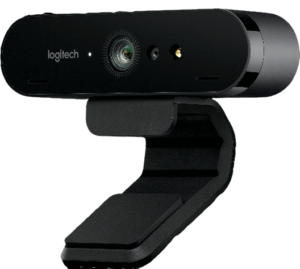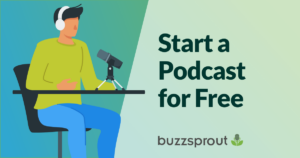Choosing the right camera for your podcast can really level up your content. As more creators are turning to video podcasts, it's become crucial to se
Choosing the right camera for your podcast can really level up your content. As more creators are turning to video podcasts, it’s become crucial to select a video camera that best suits your needs. Don’t worry, you don’t need to be an expert in tech to find the perfect one! Whether you’re just starting out or already have a podcast, having the right camera can significantly enhance what you bring to your audience.
To help ease this process, we’ve put together a guide with our top 10 recommendations for podcasting cameras. So sit back and check out these options – they could make all the difference in bringing your ideas and perspectives alive on screen.
Good Cameras Will Increase Your Podcast’s Reach
Enhancing the quality of your podcast’s production and content can help broaden your audience. You can offer your podcast in both audio and video formats, with the possibilities of hosting videos on YouTube for added monetization potential.

Here are some advantages to consider:
- A video format allows viewers to connect better with you, boosting your credibility.
- Podcasts typically run longer than thirty minutes which could lead to increased watch time and potentially higher ad revenue.
- With YouTube being a widely used search engine, there’s an opportunity for organic discovery of your video podcasts on this platform.
- Video podcasts also provide more room for ads and calls-to-action that might not be possible through standalone social media posts or links.
In today’s world, ensuring top-notch production quality is crucial. Producing high-quality videos from your podcasts or their highlights will make it easier for people to find you on different platforms.
What Types Of Cameras Are Suitable For Recording A Podcast?
The choice of video camera for podcasting depends on the individual and their purpose. Three types of cameras that work well are still cameras, camcorders, and external webcams.
External WebcamExternal webcams are small cameras placed on a computer monitor or used as free-standing devices. These cameras typically connect to the PC with a USB cord and have dedicated video recording capabilities, providing reasonably good quality recordings.
|
Still CameraA still video camera records and stores immobile photographs as frames of video. It could be a DSLR, point-and-shoot, or mirrorless type of camera. You can capture footage directly from the device or use it remotely for an interview or live podcast on your computer.
|
CamcorderCamcorders are renowned for having superior built-in microphones compared to other video camera forms. They also possess higher-quality preamps, and a few may contain XLR inputs allowing the user to select an even better XLR microphone.
|
Our Top Pick For The Best Cameras
Panasonic HC-V770K
|
Panasonic Lumix FZ280
|
Canon EOS M50 Mark II
|
Nikon D5300
|
GoPro Hero9
|
Logitech Brio
|
Canon EOS Rebel SL3
|
Olympus OM-D E-M10 Mark IV
|
Panasonic Lumix G7
|
Nikon Z5
|
Things To Consider Before Buying A Podcast Camera
Resolution
The resolution of a screen is determined by how many pixels can be displayed on it. Pixels are the small squares that make up digital images; the resolution is usually represented in a width x height format.
A higher resolution is beneficial in terms of video quality as it produces clearer images. We suggest selecting a resolution of 1920×1080 (1080p).
Not only does this provide better visuals, but it also gives more room for post-production editing, including zooming in or out and cropping the frame without compromising on quality. Therefore, recording at higher resolutions is possible.
Video Recording Limit
One of the major drawbacks of video cameras is the restricted recording time. Most have a maximum video recording limit of 29 minutes, which can be quite limiting for longer projects such as an hour-long podcasts. If working alone, however, you can take advantage of remote shooting and control your camera from your mobile phone to start and stop recordings easily.
Frame Rate
The frame rate of a camera is the number of still images it captures per second. This becomes important if you shoot in low light when capturing objects that move quickly or create slow-motion videos.
We suggest having 24 or 30 frames per second for the frame rate.
Auto Focus
If you’re recording with a guest or multiple guests, the camera must be able to capture their movement accurately. A good autofocus system is essential as it helps keep your audience focused on what’s happening. Our guide covers cameras that offer reliable and accurate autofocus capabilities.
Audio Features
If you want to purchase the right camera for podcasting, find one equipped with a great internal microphone and space for an external microphone. Audio is essential in podcasts, but not all features will be necessary for every podcaster.
An external microphone can benefit journalists, vloggers, podcasters, and YouTubers. It can either come in the form of a USB-type or a 3.5mm jack plug type.
Quality Sensors
The quality of the recordings produced by a camera is primarily determined by the type of sensors it has. CMOS and CCD image sensors are some of the most advanced available, so opting for a camera with one (or both) would be advantageous when producing your podcast.
Battery Life
Podcasts and live streams often take a long time to record, so it is essential to have a camera with extended battery life to avoid interruptions. Before you start shooting, make sure that your camera’s battery can last through the entire duration of your recording by testing its video capabilities.
FAQs
Can you use your Phone as a video podcasting camera?
We typically do not recommend using a phone’s microphone for audio recording. Nevertheless, many phones are suitable for producing video podcasts due to their advanced video recording capabilities.
The iPhone 13 Pro offers 4K video recording at 24 fps, 30 fps, and 60 fps, as well as 1080p FHD video recording at either 30 or 60 frames per second. On the other hand, the Samsung Galaxy S21 can record 8K videos at 24fps, 4K UHD videos at 60fps, and 1080p FHD videos at a rate of 60 frames per second.
Can you use in-built webcam?
If you’re new to podcasting and have a limited budget, use the webcam already built into your laptop or computer. Most laptops come with an HD webcam as standard, and inexpensive external webcams can be clipped onto the top of the screen.
The ease of use of this option is often offset by poorer-quality video and audio. Automatic exposure may not capture faces accurately, while the built-in mic tends to produce muffled sounds. Additionally, the video resolution is usually lower than expected.
How many cameras should you use?
One camera is sufficient if you only intend to record a basic podcast. Nevertheless, if you think that audio and video together best represent your content strategy, then two cameras should be considered to capture different perspectives.

Choose The Perfect Camera To Elevate Your Podcasting Game
A quality camera is essential for anyone who podcasts, as it enables them to capture their content. Different cameras available in the market vary in size, price, and build; however, no two models are alike, so people must consider their skill level and expectations when making a purchase.
I hope that our article regarding the TOP 10 best podcast cameras for 2023 has helped you in making your decision! All of these have their own advantages suitable for recording for podcasts. It is up to you which one you like the most. Choose a camera that fulfills your requirements for recording, and start boosting your podcast’s reach by incorporating videos now!




 Ideal for aspiring podcasters on a budget, the
Ideal for aspiring podcasters on a budget, the  The
The  One of the most well-known mirrorless cameras for bloggers, podcasters, and content creators is the
One of the most well-known mirrorless cameras for bloggers, podcasters, and content creators is the  You can take your video recording to unprecedented heights with the
You can take your video recording to unprecedented heights with the  The
The  The
The  The
The 
 The
The  The
The 
COMMENTS